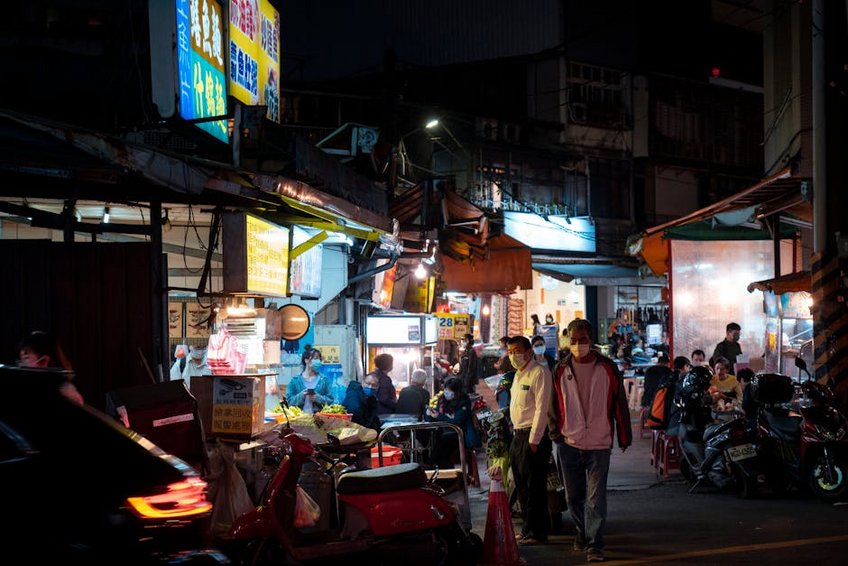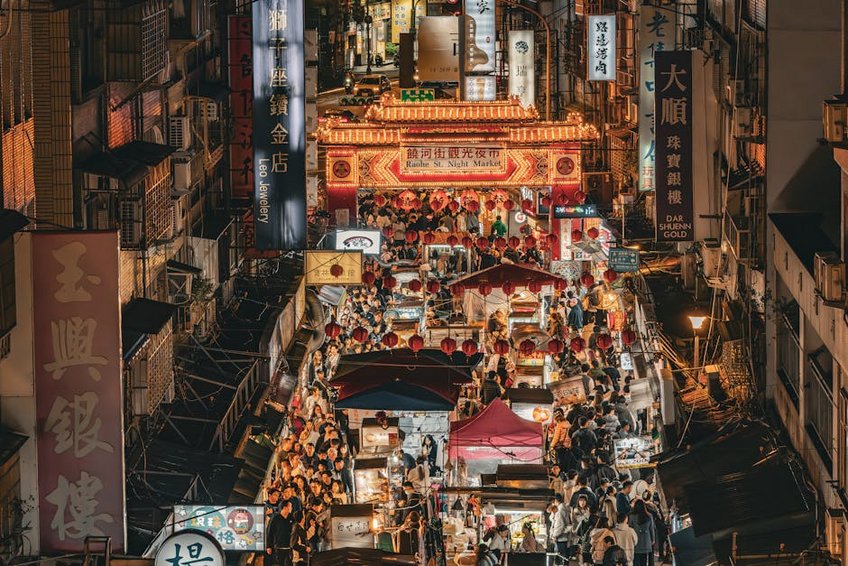Night Markets of Taiwanese Cuisine: Your Ultimate Food Adventure Guide
Exploring the night markets of Taiwanese cuisine offers one of the most authentic and exhilarating food experiences you’ll ever encounter. These bustling, neon-lit culinary wonderlands serve as the beating heart of Taiwan’s food culture, where generations of family recipes meet modern innovation in every steaming basket and sizzling wok. The night markets of Taiwanese cuisine represent more than just places to eat—they’re social hubs, cultural institutions, and culinary universities all rolled into one vibrant package. From the legendary stinky tofu to bubble tea that started a global phenomenon, these markets provide an unforgettable journey through flavors that have shaped Taiwan’s identity. Whether you’re a street food novice or a seasoned gastronomic adventurer, the night markets promise an experience that engages all your senses while introducing you to the soul of Taiwanese hospitality and culinary creativity.
Night Markets of Taiwanese Cuisine – Essential Information
Understanding the cultural significance and operational dynamics of Taiwan’s night markets will dramatically enhance your experience. These aren’t just random collections of food stalls—they’re carefully organized ecosystems with deep roots in Taiwanese history and community life. Most night markets operate from late afternoon until midnight, with peak hours between 7-10 PM when locals finish work and students complete their studies. The atmosphere transforms from leisurely afternoon snacking to energetic evening socializing as the night progresses. You’ll find that each market has its own personality and specialty dishes, often reflecting the neighborhood’s history and demographic. The beauty of exploring night markets of Taiwanese cuisine lies in their democratic nature—everyone from billionaires to students eats at the same stalls, united by their love for incredible food at accessible prices.
Historical Background – What You Need to Know
- Night markets originated during the Tang Dynasty but flourished in Taiwan during the 1950s as informal gathering spaces
- Many famous markets started as temporary temple fairs before evolving into permanent installations
- The cultural practice reflects Taiwan’s history as a trading hub that incorporated influences from China, Japan, and Southeast Asia
- Budget traveler: $15-25 USD per person for a complete meal including multiple dishes and drinks
- Mid-range experience: $30-50 USD allowing for premium items like seafood and more experimental tasting
- Luxury feast: $60-100 USD for trying everything that catches your eye, including imported delicacies
- Taiwan Tourism Bureau Official Site
- Lonely Planet Taiwan Night Markets Guide
Market Etiquette and Customs – Key Details
Navigating night markets involves understanding some unwritten rules that will make your experience smoother. Always carry small bills—vendors prefer cash and often struggle with large denominations. Don’t be shy about pointing at what you want if there’s a language barrier. It’s customary to eat while standing or walking, though most markets have small seating areas. If you’re with a group, consider the “divide and conquer” strategy where different people queue for different specialties to maximize tasting opportunities. Remember that bargaining isn’t common for food items (unlike merchandise sections), but vendors might round down or offer small discounts if you’re buying multiple items. Most importantly, embrace the chaos and go with the flow—the organized chaos is part of the charm.

Night Markets of Taiwanese Cuisine – Planning Your Trip
Strategic planning can transform your night market experience from overwhelming to extraordinary. Unlike spontaneous visits to single restaurants, conquering multiple night markets requires consideration of timing, location, and appetite management. I recommend dedicating at least 2-3 hours per market visit to properly explore without rushing. The best approach involves researching each market’s specialty dishes beforehand and creating a loose “must-try” list while remaining open to spontaneous discoveries. Consider your accommodation location when planning—Taipei’s excellent MRT system makes market-hopping efficient, but you’ll want to minimize travel time between eating sessions. For first-time visitors, I suggest starting with one of the larger markets like Shilin or Raohe to experience the full spectrum of Taiwanese night market culture before exploring neighborhood-specific markets with more localized flavors.
Best Time to Visit Night Markets
Timing your night market visits requires balancing weather considerations, crowd levels, and culinary availability. The autumn months (September-November) offer ideal conditions with comfortable temperatures and lower humidity, making outdoor eating more enjoyable. Spring (March-May) also provides pleasant weather though with higher chance of rain. Summer months (June-August) can be brutally hot and humid, but night markets come alive later in the evening when temperatures drop. As for daily timing, arrive around 6 PM to beat the largest dinner crowds but still experience the vibrant atmosphere. Avoid visiting on Monday evenings when some stalls might be closed, and note that weekend nights are significantly more crowded but offer the most complete selection of vendors. Typhoon season (July-October) might affect operations, so check weather forecasts accordingly.
Budget Planning and Costs
Essential Preparation Checklist
Proper preparation separates night market novices from seasoned pros. Wear comfortable walking shoes with good support—you’ll be standing and walking for hours on often uneven surfaces. Choose clothing with stretchy waistbands to accommodate your expanding stomach throughout the evening. Bring hand sanitizer or wet wipes since eating with hands is common and seating might be limited. A small backpack keeps your hands free for holding food and drinks while navigating crowds. If you’re sensitive to smells, consider that night markets feature strong aromas from various cooking methods. Those with dietary restrictions should research phrases for “no meat,” “no seafood,” or “less spicy” in Mandarin. Most importantly, arrive hungry but not starving—you want to enjoy everything without feeling rushed or uncomfortably full too quickly.
Night Markets of Taiwanese Cuisine – Top Attractions and Activities
The real magic of Taiwanese night markets lies in their incredible diversity of food experiences, with each market offering unique specialties that have often been perfected over generations. While all markets share common elements, they differentiate themselves through signature dishes, atmosphere, and historical significance. The largest markets function like culinary amusement parks with hundreds of stalls spanning multiple streets, while neighborhood markets offer more intimate experiences with stronger local character. Beyond eating, many markets feature game stalls where you can win plush toys, carnival-style entertainment, and shopping sections selling everything from phone accessories to clothing. The experience transcends mere dining—it’s cultural immersion through all five senses, with sizzling sounds, vibrant visuals, enticing aromas, diverse textures, and of course, unforgettable flavors creating memories that last long after your visit.
Must-See Market Highlights
Every night market enthusiast should experience these iconic establishments that define Taiwanese street food culture. Shilin Night Market in Taipei stands as the largest and most famous, featuring both above-ground and underground sections with incredible diversity. Raohe Street Night Market offers a more condensed but equally impressive experience with its famous black pepper buns and proximity to the beautiful Ciyou Temple. Fengjia Night Market in Taichung holds the title of Taiwan’s largest night market by area, popular among students for its innovation and affordability. Keelung Night Market specializes in seafood with its coastal location, while Huaxi Street Night Market (Snake Alley) provides more adventurous eating experiences. Each market has its signature dish that draws pilgrims from across Taiwan and beyond, creating culinary destinations worth traveling for.
Hidden Gems and Local Favorites
Beyond the famous markets, Taiwan boasts numerous neighborhood night markets that offer equally authentic experiences with fewer tourists. Ningxia Night Market in Taipei maintains a more local atmosphere while serving some of the city’s best traditional snacks. Linjiang Street Night Market (Tonghua Night Market) attracts Taipei residents with its excellent quality-to-crowd ratio. Yilan Night Market in northeastern Taiwan showcases the region’s agricultural bounty with unique specialties like mutton soup and scallion pancakes. Taoyuan Night Market serves the industrial city’s diverse population with both Taiwanese classics and Southeast Asian influences. Tainan’s Flower Night Market operates only on specific nights but offers some of southern Taiwan’s most distinctive flavors. These less-crowded markets often provide more opportunities to interact with vendors and discover dishes that haven’t yet appeared on international food blogs.
Night Markets of Taiwanese Cuisine – Practical Travel Information
Navigating the practical aspects of night market visits requires understanding transportation, payment methods, and logistical considerations. Taiwan’s excellent public transportation system makes reaching most night markets straightforward, with many located near MRT stations or bus stops. While major markets accept credit cards at some stalls, cash remains king—withdraw New Taiwan Dollars (NTD) beforehand since ATM queues at markets can be long. Download food translation apps or screenshot dishes you want to try since English proficiency varies among vendors. Consider bringing a compact foldable stool if you have mobility issues, as seating is often limited. For hygiene-conscious travelers, note that most vendors use disposable plates and utensils, though environmental initiatives are increasing reusable options. The markets are generally safe with good lighting and police presence, but maintain standard big-city awareness of your belongings in crowded areas.
| Transportation Method | Best For | Approximate Cost (USD) |
|---|---|---|
| MRT (Metro) | Markets in Taipei city center | $0.50-1.50 per trip |
| Local Bus | Markets outside city center | $0.30-1.00 per trip |
| Taxi/RideShare | Groups or late-night return | $5-15 per trip |
| Bicycle | Markets with bike-friendly access | $1-3 per rental hour |


